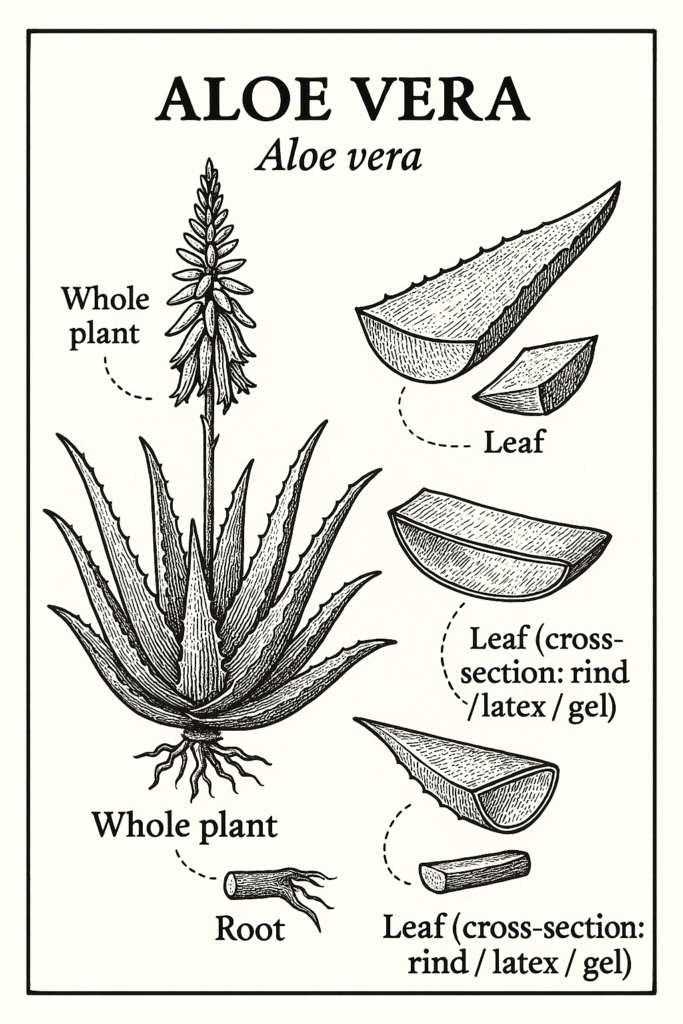Aloe Vera
Aloe vera (syn. Aloe barbadensis Mill.) — Materia Medica

Snapshot
• Topical gel may offer modest benefits for superficial burns and minor wounds; results are mixed across trials. • Oral LATEX is a stimulant laxative; use is short-term only. • Oral inner-leaf gel has inconsistent evidence for dyspepsia and metabolic endpoints (glycemia/lipids); study quality varies.Aloe vera is a succulent whose leaf contains two distinct materials: the inner clear gel (mostly polysaccharides like acemannan) used topically as a soothing demulcent, and the bitter yellow latex (rich in anthraquinone glycosides like aloin) located under the rind, historically used as a stimulant laxative. Commercial products may be “decolorized” to remove most anthraquinones. Topically, the gel is applied to minor burns, sunburns, and abrasions; internally, the latex has short-term laxative actions, whereas inner-leaf gel products are marketed for digestive comfort with mixed clinical evidence.
Identification & Harvest
Harvest mature outer leaves. For gel, fillet and thoroughly remove the yellow latex layer to minimize anthraquinones; many internal products use decolorized inner-leaf gel.Preparations
- salve
- powder
- capsule
- compress
- poultice
- slurry
Safety
Avoid oral LATEX during pregnancy and lactation; contraindicated with intestinal obstruction, acute GI inflammation, or undiagnosed abdominal pain. Short-term only due to risk of cramping, diarrhea, and electrolyte imbalance (↓K⁺). • Drug interactions (latex): may potentiate effects/side effects with cardiac glycosides (via hypokalemia), diuretics, corticosteroids, and other laxatives; separate from oral meds to avoid altered absorption. • Gel (topical): generally well tolerated; rare contact dermatitis. Do not apply to deep, infected, or large wounds without clinician guidance. • Individuals allergic to Liliaceae/Asphodelaceae may react.Related Research
No studies yet.
References
- (2024) National Center for Complementary and Integrative Health (NCCIH). “Aloe Vera.”
- (2012) Cochrane Wounds Group. “Aloe vera for treating acute and chronic wounds.”
- DermNet NZ. “Aloe vera.” Clinical overview for dermatology uses.
- (2013) European Medicines Agency (HMPC). “European Union herbal monograph on Aloe barbadensis Miller and/or Aloe ferox Miller, leaf latex.”
Educational content only; not medical advice.
